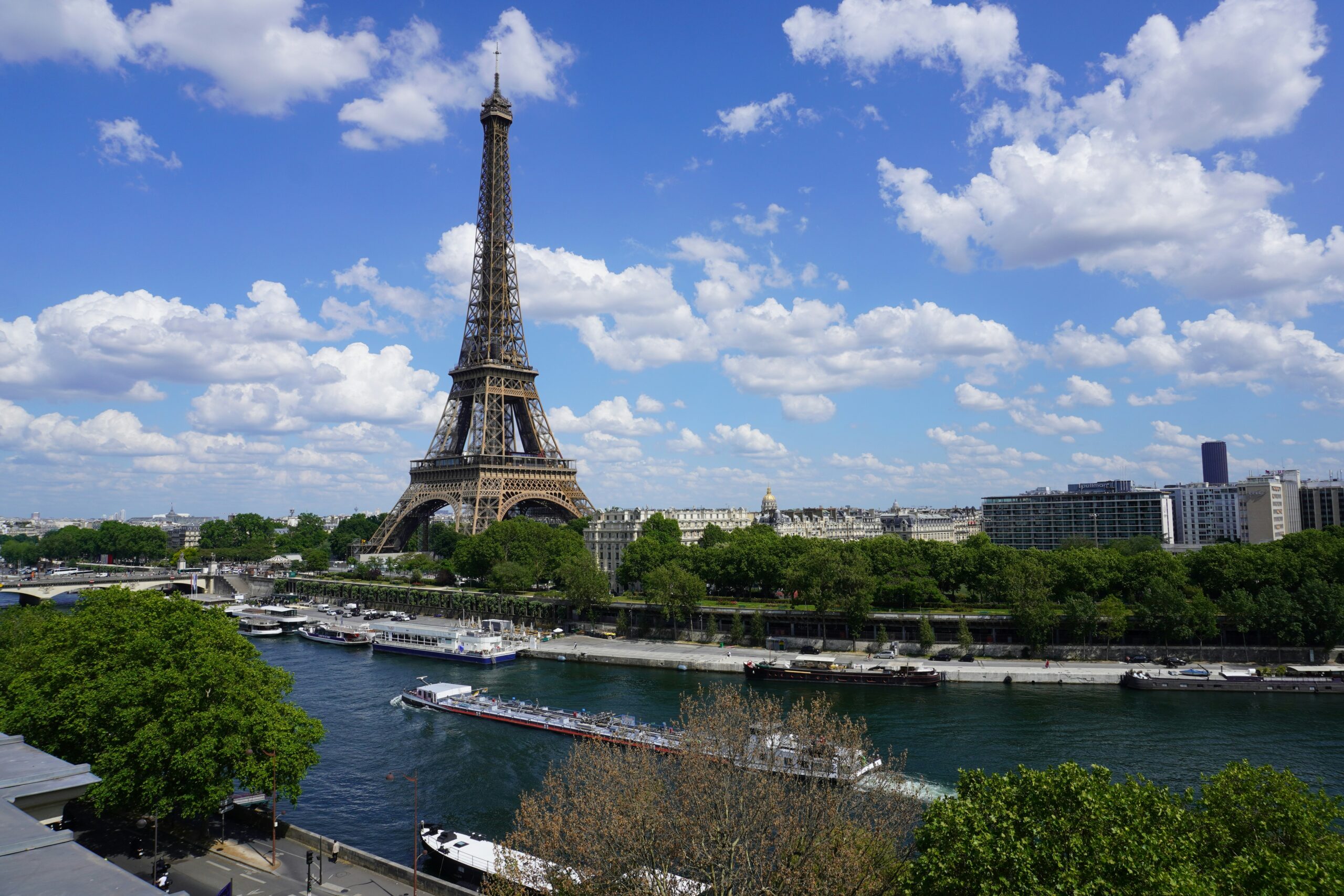Image description: The River Seine in Paris, flowing in front of the Eiffel Tower. Image by Jenny Frost / Unsplash
The River Seine reopened to public swimmers in Paris on Saturday July 5, marking the first time since 1923 that bathers could take a dip in the iconic waterway following a years-long cleanup effort. For 100 years swimming was banned in the river because of the levels of water pollution that could make people ill.
There are now three designated areas for public swimming in the Seine – one near the Eiffel Tower, another close to Notre Dame Cathedral and a third in eastern Paris. The city will be able to welcome over 1,000 swimmers daily until August 31, and access is free.
A legacy of the Paris Olympics
The seasonal opening of the Seine for swimming is seen as a key legacy of the Paris 2024 Olympics, when open-water swimmers and triathletes competed in its waters which were specially cleaned for the event. The outgoing mayor of Paris, Anne Hidalgo, also helped to champion the plans, jumping in the river herself before the Olympics.
£1.2 bn clean up effort – an inspiration to others?
About €1.4bn (£1.2bn) has been invested in the project including connecting more than 20,000 homes to the sewer system (preciously it had been dumped directly into the Seine), improving water treatment facilities and building substantial rainwater storage reservoirs equivalent in size to 20 Olympic swimming pools to avoid overflows of sewage during rain storms.
The Guardian reports that Paris’s efforts have been in part inspired by, and have helped to inspire, similar popular projects in cities around Europe where campaigners have fought to reclaim waterways for swimming. In particular, concerns about city dwellers staying cool during increasing summer temperatures have been at the forefront of demands.
